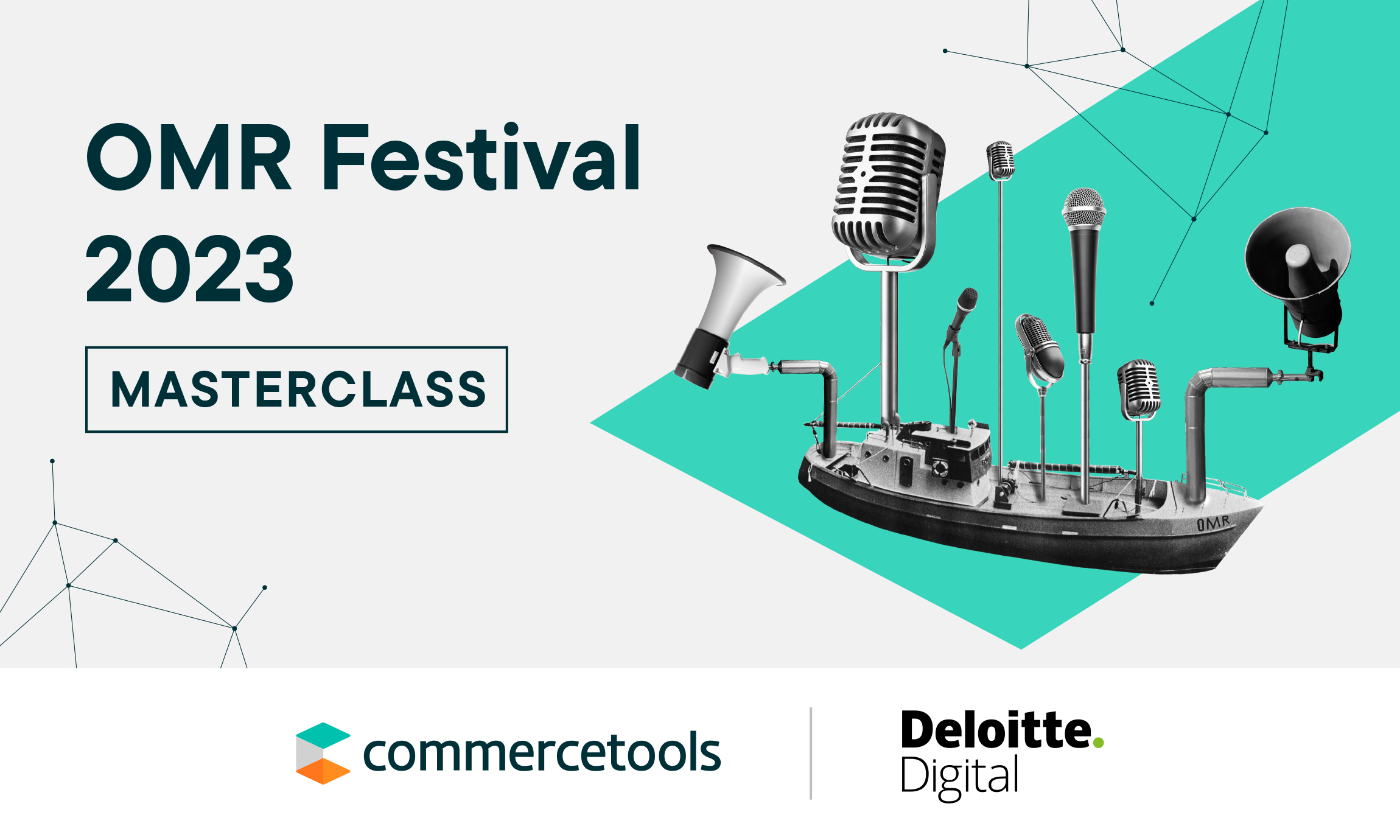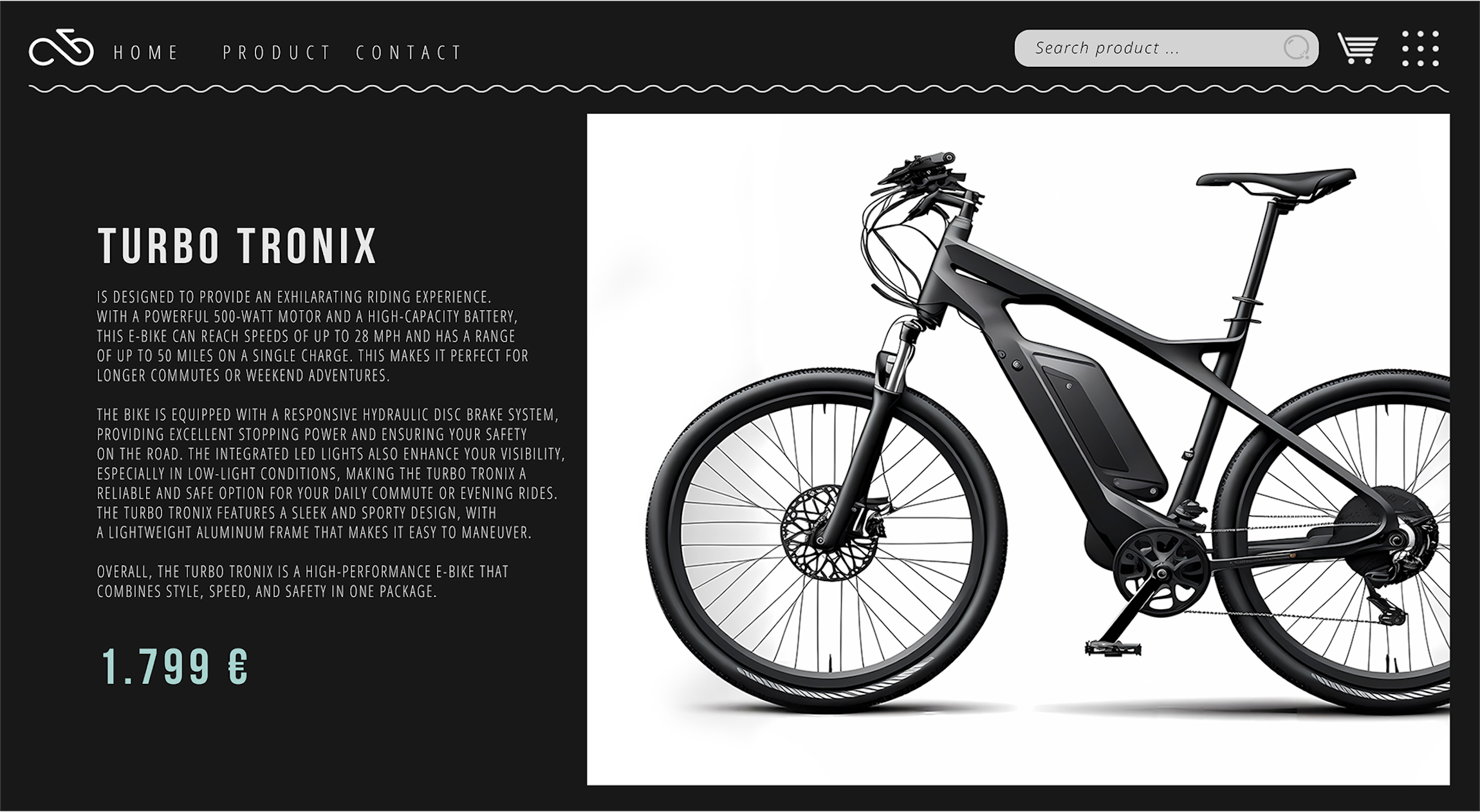The OMR Festival welcomed the movers and shakers of digital and marketing in the Hanseatic City of Hamburg, Germany, to discuss all things digital — including the amazing evolution of commerce, direct-to-consumer strategies and omnichannel experiences. The masterclass “Your top 5 best-in-class ingredients for eCommerce in 2023”, led by Hauke Rahm, VP Customer Success at commercetools, and Swaralipi Ghosh, eCommerce Architect at Deloitte Digital, wowed the audience with in-depth insights, use cases and how to make it happen with composable commerce.

Today’s eCommerce has become a fundamental part of modern business operations, so much so that we could compare it to a very essential element of our lives: Food. Just like a living being needs proper food to stay healthy, businesses need digital commerce to acquire and retain the customers necessary to drive revenue and keep in shape. And, the same thing that happens if you consume harmful foods that hurt your body, happens with companies: Consuming a misleading diet of unsuitable technologies can cause a lot of health problems that are difficult to shake. So, what are the best ingredients for a company to build the muscles to grow and keep fit?
To help brands and retailers stay visible, relevant and prominent for customers, Hauke and Swaralipi ran a masterclass session with the top 5 ingredients to make that a reality at OMR Festival 2023.
Watch the entire Deloitte Digital’s masterclass videoIngredient #1 — Understand your consumers
Who’s shopping on your site? And how are consumers using your product? Answering these questions isn’t always easy, but it’s absolutely essential. For example, imagine you’re a chef preparing burgers and serving them directly to your customers. You know that eight out of ten customers throw the tomato out of their burgers. Well, if you’d know this in advance, you can stop putting tomatoes in your burgers, which means you don’t have to buy as many tomatoes as you currently do. As a result, you save time, money, resources and wastage.
Now, consider this: If you’re feeling confident that your burgers are delicious, you may resell a share of your product to food trucks. After some time, you realize nobody is buying your burgers. What has gone wrong? There can be many things: Is the food truck serving your burger at optimal temperature? Is the seller storing your product under hygienic conditions? Or perhaps there are other options in the seller’s menu that are more lucrative?
This is what can happen when someone else is selling on your behalf and you lose control and visibility. This gap is even larger for B2B markets: By the time a product from a manufacturer reaches the end customer, it has gone through a whole journey through wholesalers, distributors and retailers. With a series of middlemen in between, it’s nearly impossible to leverage that data or create a valuable relationship with your customer.
This is why we suggest that it is finally time to understand your consumers by closing this gap and creating a bridge between the manufacturer and the end customer, whether it's B2B or B2C.
eCommerce Architect, Deloitte Digital
That’s why a direct-to-consumer (D2C) sales strategy makes a ton of sense: The opportunity to get closer to customers — and leverage customer data — is immense. You can try out new products if you have the consumer data. For example, if your customers prefer exotic veggies, you can create a veggie burger and see how it’s perceived by your audience. Having a D2C sales strategy enables you to control and own the customer experience from end to end, and you can act on what your customers are telling you about products, experiences and more.
Wherever your product is portrayed, you are leaving an impression. The more you can control it, the better, and the more impact you will have on your consumer.
VP Customer Success, commercetools
Ingredient #2 — Enable your consumers AND employees with omnichannel
Consumers now want to do online shopping when it’s convenient and through the channel of their choice. Monetizing every interaction makes sense, but it’s more than putting a “buy” button on a social media platform or mobile app. Swaralipi encountered a situation a few years ago that epitomizes this point: While on a business trip, she had booked a car rental that would be available as soon as she’d arrive at the airport. However, as the flight was delayed by seven hours, she’d miss that reservation. So, she used the car rental’s super convenient mobile app, which enabled her to change the reservation in less than a minute. So far, so good.
Fast forward to her arrival, and the car wasn’t available. Despite the convenient mobile app, the reservation change request wasn’t processed and the agent behind the counter wasn’t informed that the reservation was requested at all. So, when Swaralipi didn’t show up, the agent made the car available to someone else. What does this tell us? That opening a myriad of channels, without enabling data processing in the backend, is just not enough. It’s important to enable consumers with self-service solutions AND employees with the same convenience.
That’s why omnichannel commerce, despite being around for so long, still hasn’t taken off. For brands to enable omnichannel experiences, it’s vital for all channels to be connected and orchestrated in a way that data flows seamlessly across all systems and customer-facing employees. That includes connecting the POS (point-of-sale) system to eCommerce in order to ensure that all orders are in one place as well.
Ingredient #3 — Empower your search with AI
Search is an essential part of the shopper experience, especially with the sea of product options available online. In conventional search, you can find products and filter attributes according to size, budget, color, etc. However, what if you’re looking for a bicycle that not only fulfills the standard criteria but also fits the trunk of your car? With a conventional search, you’d need to understand the bicycle’s dimensions and calculate if it fits based on the size of your trunk. That’s quite a bit of filtering gymnastics.
Now, it would be a lot more convenient if you could simply type: “I need to buy a bicycle within EUR 2500 that will fit into my BMWx1 boot space.” This is exactly what AI-powered search with natural language processing (NLP) helps shoppers achieve.

In contrast to conventional search, AI enables consumers to just type in what they want and get the results, with all of these search queries translating into the same query in the background. It also enables brands to provide product recommendations, which go hand-in-hand with search. So, if there's no match for what the consumer is searching for, instead of showing “no results found,” it’ll show related products and products that are frequently bought together.
Ingredient #4 — Organize your data
So far, we’ve explored three ingredients: (1) Understand and get closer to your customers, (2) Enable consumers and employees through omnichannel strategies, and (3) Integrate AI-powered search. However, none of this will work until and unless, you organize your data.
If you screw up your data model on day one, you're going to suffer on day 30, 60, 90, and forever and ever.
VP Customer Success, commercetools
A common problem businesses face is that they have too much data and lack the capability to organize it appropriately so that they can enable consumers to interface with the data they need. For example, if you’re buying a bag, it’s important to know the material, color and size of the bag. But also, it’d be great to answer questions like: Why are you buying it? Is it a travel bag? Does it fit into the airplane cabin? Is it a backpack or a roller bag? How much weight can it carry?
That means: What’s the relevant data a shopper is looking for but without making the shopper read a five-pager describing all the product features? So, you need to define what data to have, evaluate it, correct it, and, very importantly, maintain it. Moving forward, it’s also critical to declutter and de-silo your data.
Ingredient #5 — Connect with your customers through personalization
The pandemic taught us two major things: First, we can do everything online. And second, we still crave that human connection. With consumers’ expectations increasing by the day, we need to provide that connection to our customers and make them feel understood. How can we achieve this? Through personalization.
Imagine a consumer named Eva that browsed your website previously, and is interested in women's and kids' collections. First, instead of showing a regular homepage, you can tweak that view by adding your frequently selling products and top-rated collections for the women’s and kids’ apparel sections. This is exactly what Netflix does: The streaming giant has 33 million different versions of presenting movie titles based on what genres and preferred actors subscribers like.
Secondly, this connection is also reflected in customer service. For instance, if a customer has a bad experience, AI-based chatbots can react to customers’ emotions as they carry out the conversation. Also, you can use product recommendation engines to rank products based on user preferences. At the end of the day, it’s all about serving customers' needs and giving them a personalized experience at scale.
Composing your best-in-class experiences
Bringing all of these elements together is composable commerce, which enables companies to quickly adapt to new customer expectations and market changes. This is because a composable model enables you to add, swap or even replace elements of your commerce infrastructure with ease. This is what composable commerce can do — and how it helped hundreds of companies, such as Pret A Manger, Vistaprint (owned by Cimpress) and Domino’s Pizza.
There isn't the one solution that will fix it all. There's an approach that can guide you, like a technology path that can guide you to constantly adapt and constantly change, constantly innovate. And this is what we call composable commerce because in a way you can actually compose your commerce.
VP Customer Success, commercetools
According to Hauke, to innovate at speed, companies need to stop replatforming. A composable model enables exactly that, as companies no longer need to rip apart their entire infrastructure, and can become more agile, flexible and adaptable. That way, you can adopt a D2C strategy step by step with some of your products. Or you can plug and play a virtual assistant to support your human agents. In a nutshell, if your commerce infrastructure is modular and flexible, you can innovate and adapt quickly, tackling opportunities as they come.
To learn more about how composable commerce enables your commerce to excel with omnichannel strategy, download our Omnichannel Playbook now.